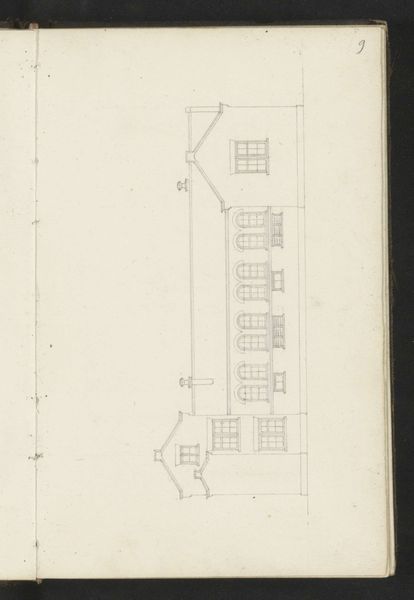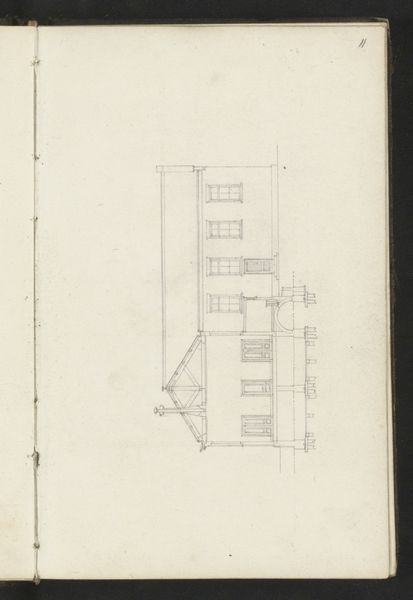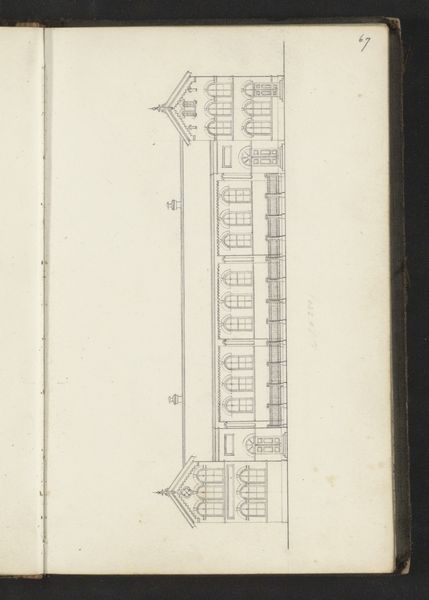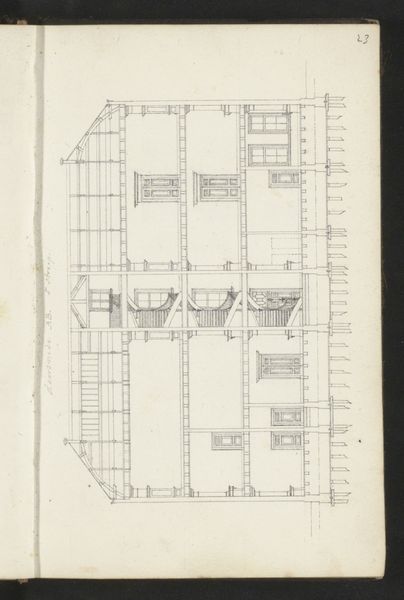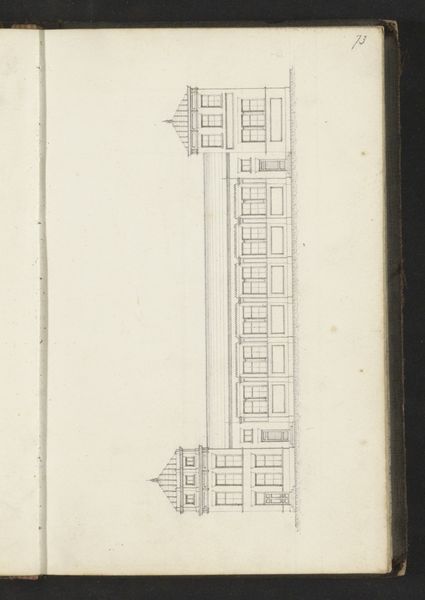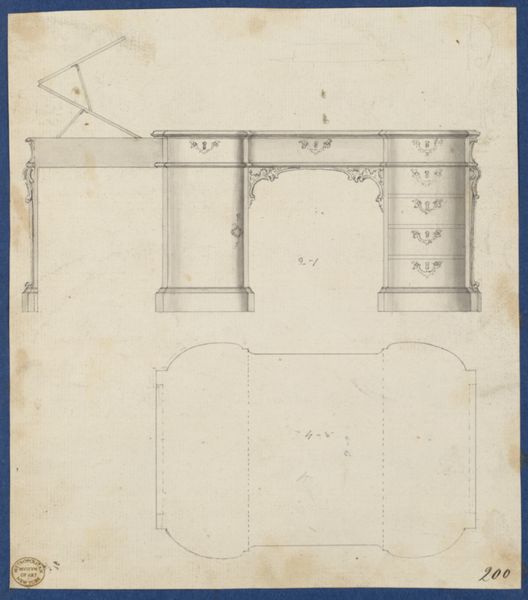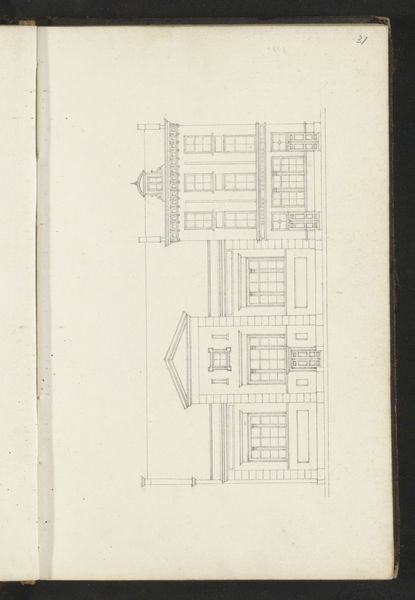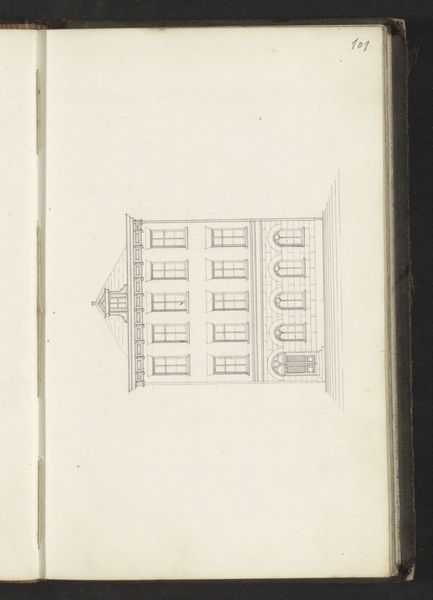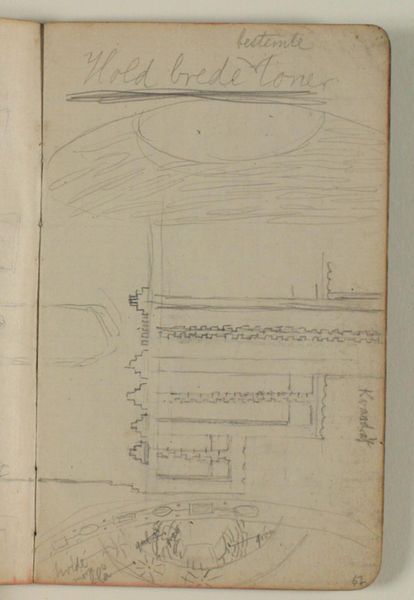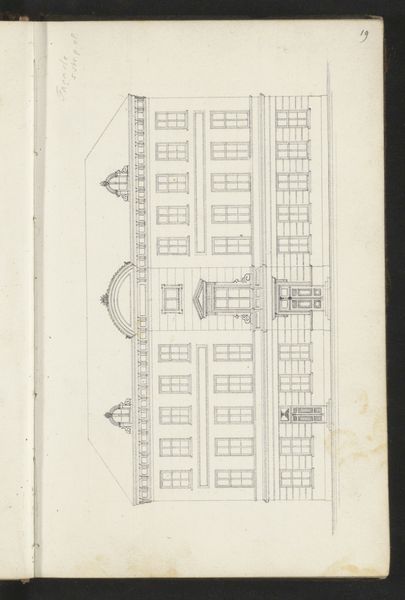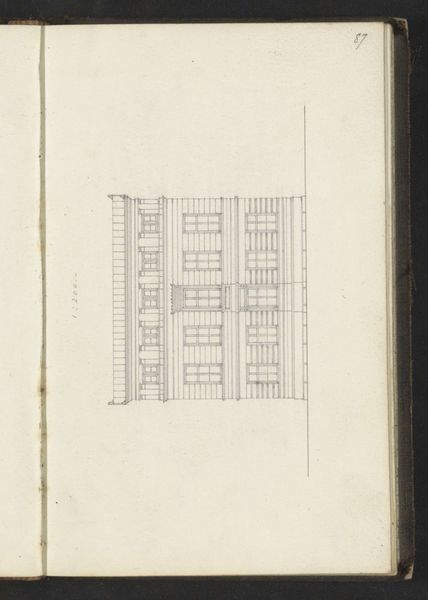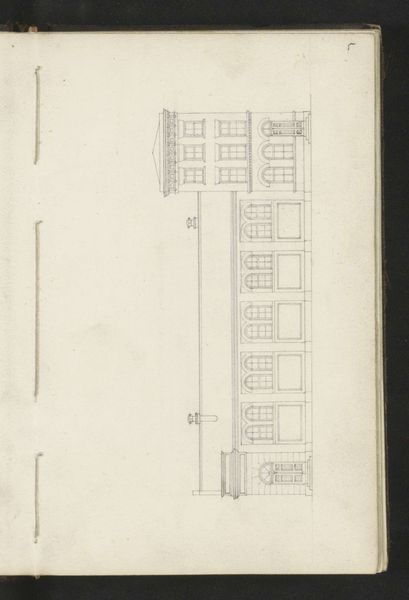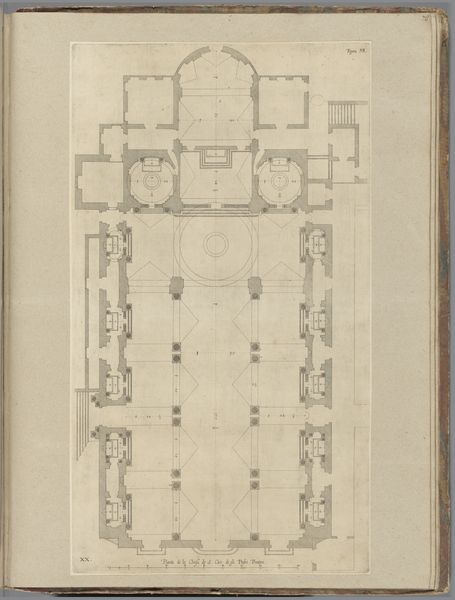
drawing, paper, pencil, architecture
#
architectural sketch
#
drawing
#
aged paper
#
toned paper
#
art-nouveau
#
sketch book
#
paper
#
form
#
personal sketchbook
#
idea generation sketch
#
sketchwork
#
sketch
#
pencil
#
line
#
sketchbook drawing
#
storyboard and sketchbook work
#
sketchbook art
#
architecture
Copyright: Rijks Museum: Open Domain
Curator: Here we have Carel Adolph Lion Cachet’s "Ontwerp voor een buffetkast met een barometer," a design for a buffet with a barometer, created around 1906. Editor: It feels fragile, almost like a fleeting thought captured on paper. The thin pencil lines and the warm, aged tone of the paper give it a sense of quiet intimacy. Curator: Indeed. The linear quality is central; it is a working drawing. Note how Cachet employs line to define the architectural form, delineate interior spaces, and suggest surface detail. The overall design reflects the principles of the Art Nouveau movement, seen in the curvilinear elements and the emphasis on decorative form. Editor: It makes me consider the dining rooms it might have inhabited. The Art Nouveau movement was embraced by a rising bourgeoisie, a class seeking to differentiate themselves through taste and consumption, responding to the stark functionalism of industrial design that relegated artistic design to the sidelines. Was Cachet consciously designing for a new social order? Curator: An interesting point. Consider, though, that Cachet focuses primarily on the visual and spatial interplay, a tension between form and function. Notice the calculated asymmetry, balanced by the weight of the central cabinet area. The meticulous arrangement creates an aesthetic experience irrespective of any socio-political dimension. Editor: But can we divorce form from its societal implications? The choice of Art Nouveau, with its inherent ornamentation and craftsmanship, signaled a rejection of mass-produced, readily available design. These weren't simply stylistic preferences; they reflected evolving values, and created exclusion on the basis of access. Who would have had the luxury of commissioning such a piece? Who would be relegated to using something utilitarian? Curator: You’re prompting us to look beyond its pure structure, and the relationship between its elements. Although I don't necessarily disagree, it would be useful to further clarify the artist's intentions... But such information is unavailable. Editor: True. Ultimately, the drawing itself, with its delicate lines and aged paper, represents the era’s ambitions and contradictions, forever poised between a romanticized past and an uncertain future. Curator: It serves as a reminder that an artwork has both intrinsic aesthetic qualities, as well as serving as a point of dialogue regarding societal contexts of production, the values espoused and/or imposed through aesthetics.
Comments
No comments
Be the first to comment and join the conversation on the ultimate creative platform.
